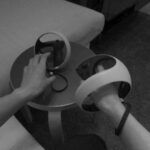
NASA has a big plan for the moon. From its Orion capsule, which will bring astronauts to the surface of the moon, to plans to build nuclear power plants there, a race to make humans return on the moon and even become a long-term moon base. But if people will be sent to the moon for more than a few days, they will need access to certain resources, and one of the biggest needs is water. Recent research has found that there is water on the moon, and maybe more than we thought before, especially in the form of ice in the crater around the poles. But to take advantage of this resource, first, we need to find it, and that is what NASA Viper Mission wants to do.
Viper, or volatils that investigate polar exploration explorers, will be a moon rover sent to find ice and other resources that can be useful for future human explorers (through NASA). This will search around the south pole of the moon, in particular, hunting through the crater for proof of ice there. Therefore – and because the dust that covers the moon called regolith – Rover wheels and suspension systems must be specifically designed to handle the trip up and through the crater.
Regolith provides a special challenge. Because the moon has no atmosphere, it has no wind. That means dust particles are not worn through abrasion as they do on earth or on other planets that have atmosphere. For this reason, regolith on sharp months such as broken glass and entering the hardware and eating it (through NASA). Viper wheels are designed to be very tough to handle this.
Water hunting equipment
To help him in the task of finding ice deposits, Viper will have four instruments. First there is a hammer drill to be boring to the surface of the moon to find ice there called the regolith drill and ice to explore the new terrain (trident). Then there are three spectrometer instruments that can analyze the sample composition by looking at the light it is called the mass spectrometer instrument that observes the lunar surgery (Msolo), the volatile infrared spectrometer system near (NIRVSS), and the neutron spectrometer system (NSS).
Trident drill will be around 3.2 legs long, allowing plows to reach far below the surface of the moon, and that is a special type of drill called Rotary Percussion. Unlike the typical drill you have in a home that only rotates, this one rotates and is a hammer so that it can pass through difficult materials such as hard stones. Two of the three spectrometers can detect hydrogen molecules and determine what type of molecule is (like what they are a single hydrogen atom, water, or different molecules called hydroxyl). And the third works to determine what gas comes from the landing of the month itself to prevent the wrong reading.
These instruments will allow Rover to get a completely new view of the Moon. “Viper will be the most capable robot ever sent by NASA to the surface of the moon and allows us to explore parts of the moon that we have never seen,” said NASA program scientist for Viper, Sarah Noble. “The Rover will teach us about the origin and distribution of water on the moon and prepare us to harvest 240,000 mile resources from the earth which can be used to safely send astronauts further into space, including Mars.”








